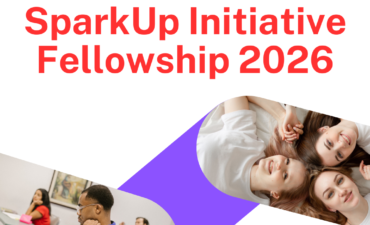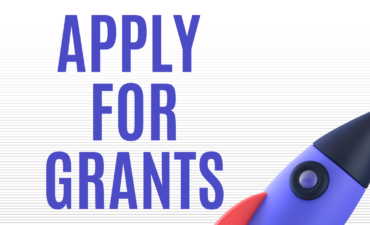Introduction: Step-by-Step Guide to Creating a Comprehensive Project Scope, just before you embark on the new project, let me first introduce you to “Project Scope”, because without a well-defined project scope, even the most promising initiatives can encounter challenges. A project scope serves as the compass, guiding the team through the intricacies of tasks, timelines, and objectives.
In this step-by-step guide, we will navigate the process of creating a comprehensive project scope. From outlining project goals to establishing clear deliverables, each step is designed to foster clarity, mitigate risks, and set the stage for a successful project journey. Join us as we delve into the intricacies of project scope creation, providing you with the tools and insights needed to ensure your project not only meets expectations but surpasses them.
Let’s begin your journey to creating the Project Scope that speaks details and volumes of work that you plan in a project.
A. Define Project Objectives (Step-by-Step Guide to Creating a Comprehensive Project Scope)
- Setting clear, measurable, and achievable objectives
In the initial phase of crafting a Comprehensive Project Scope, the foundational step involves setting clear, measurable, and achievable objectives. This process begins with thorough consultations with project stakeholders, encompassing clients, team members, and decision-makers. By gaining insights into their expectations and priorities, a comprehensive understanding of project goals is established.
The objectives are then painstakingly defined following the SMART criteria—Specific, Measurable, Achievable, Relevant, and Time-bound.
This structured approach not only enhances clarity but also provides a focused framework for goal-setting. Quantifiable metrics are intricately linked to each objective, facilitating precise progress tracking. It is paramount that these objectives align seamlessly with the overall vision of the project, ensuring every project element contributes cohesively to the overarching goals. The documented objectives serve as a crucial reference point throughout the project lifecycle, maintaining alignment and clarity among the project team. This meticulous process lays a robust foundation for subsequent elements within the project scope, propelling the project toward success.
- Ensuring alignment with the NGO’s mission
Ensuring alignment with the NGO’s mission is a pivotal step in the process of creating a Comprehensive Project Scope. This involves a careful examination of the project’s objectives and deliverables to guarantee that they harmonize with the overarching mission and values of the non-profit organization. By meticulously assessing how the project contributes to the NGO’s broader goals, it ensures that the initiative is not only purposeful but also in sync with the organization’s core values and principles.
This alignment fosters a sense of shared purpose among project stakeholders, fostering stronger collaboration and commitment. Additionally, by integrating the project seamlessly into the broader mission of the NGO, it enhances the potential for long-term sustainability and impact. This step serves as a guiding principle, anchoring the project within the organization’s vision and reinforcing its commitment to making a meaningful difference in the community or cause it serves.
B. Establish Boundaries and Limitations (Step-by-Step Guide to Creating a Comprehensive Project Scope)
- Clearly outlining what the project will and will not include
Clearly outlining what the project will and will not include is a foundational step in crafting a Comprehensive Project Scope. This involves explicitly defining the project’s boundaries, objectives, and limitations to provide a clear roadmap for all stakeholders involved. By detailing the specific components and deliverables within the project scope, it minimizes ambiguity and ensures a shared understanding among team members, clients, and other relevant parties.
This clarity helps prevent scope creep, where the project expands beyond its initial parameters, leading to potential challenges in implementation. Articulating what the project excludes is equally crucial, as it prevents misunderstandings and sets realistic expectations. This step establishes the groundwork for effective project management, enabling teams to stay focused on the defined goals and successfully navigates the complexities of project execution.
- Identifying potential constraints and challenges
Identifying potential constraints and challenges is a critical aspect of developing a Comprehensive Project Scope. During this step, project managers and teams proactively assess factors that may impede the project’s progress or success. These constraints can include budgetary limitations, time constraints, resource availability, technological considerations, and external factors beyond the project team’s control.
By recognizing these challenges early in the planning phase, stakeholders can develop mitigation strategies and contingency plans to address issues as they arise. This foresight is essential for maintaining project timelines, ensuring resource optimization, and enhancing the overall resilience of the project. Effectively identifying and addressing potential constraints contribute to the project’s success by fostering adaptability and preparedness in the face of unforeseen challenges.
C. Stakeholder Involvement (Step-by-Step Guide to Creating a Comprehensive Project Scope)
- Engaging stakeholders in the scope definition process
Engaging stakeholders in the scope definition process is a foundational step in creating a Comprehensive Project Scope. Stakeholder involvement ensures that the perspectives, expectations, and requirements of key individuals or groups are considered and incorporated into the project scope. By fostering open communication and collaboration, project managers can gain valuable insights that contribute to a more accurate and inclusive scope.
Stakeholders may include clients, end-users, team members, sponsors, and other entities impacted by the project. Through workshops, meetings, and consultations, project managers can facilitate discussions to gather input, clarify expectations, and address potential concerns. This participatory approach not only enhances the quality of the project scope but also promotes stakeholder buy-in and ownership. Involving stakeholders from the outset sets the foundation for successful project delivery by aligning the project scope with the diverse needs and interests of those invested in its outcomes.
- Incorporating feedback to enhance project scope accuracy
Incorporating feedback is a crucial aspect of refining and enhancing the accuracy of the project scope. After engaging stakeholders in the scope definition process, it’s essential to actively seek and consider their feedback. This iterative feedback loop helps identify areas of improvement, potential oversights, or additional requirements that may have emerged during discussions. Project managers should establish a structured mechanism for collecting and evaluating feedback, whether through meetings, surveys, or collaborative platforms.
By carefully reviewing and incorporating relevant feedback, project teams can ensure that the scope reflects the evolving needs of stakeholders and aligns with the project’s objectives. This adaptability not only enhances the accuracy of the project scope but also contributes to its relevance throughout the project lifecycle. Regular feedback mechanisms foster a collaborative environment, encouraging continuous improvement and ensuring that the final project scope is a well-informed and comprehensive representation of the project’s goals and deliverables.
D. Risk Assessment (Step-by-Step Guide to Creating a Comprehensive Project Scope)
- Identifying potential risks related to the project scope
Identifying potential risks related to the project scope is a proactive step in mitigating challenges that may arise during the project lifecycle. Project managers and teams should conduct a comprehensive risk assessment, focusing specifically on aspects related to the defined scope. This involves anticipating potential obstacles, uncertainties, and external factors that could impact the project’s objectives. By recognizing these risks early on, teams can develop contingency plans, allocate resources effectively, and establish mitigation strategies to address challenges as they emerge.
Common risks associated with project scope may include scope creep, changes in stakeholder requirements, resource constraints, and external dependencies. Regular risk assessments throughout the project ensure that the scope remains resilient and adaptable to unforeseen circumstances, contributing to successful project delivery. Identifying and addressing risks early not only minimizes the impact on the project’s scope but also enhances the overall project management strategy, fostering a more robust and resilient project environment.
- Developing strategies for risk mitigation
Developing strategies for risk mitigation is a crucial aspect of project scope management. Once potential risks related to the project scope have been identified, the next step is to formulate effective strategies to minimize the likelihood and impact of these risks. This involves creating a proactive plan that outlines specific actions, responsibilities, and resources required to address each identified risk. Strategies may include setting up contingency reserves, establishing clear communication channels, defining change control procedures, and implementing rigorous monitoring and reporting mechanisms.
Furthermore, collaboration with stakeholders is essential during the development of mitigation strategies. Engaging with team members, sponsors, and other relevant parties ensures a comprehensive understanding of the risks and allows for the incorporation of diverse perspectives and expertise. Continuous evaluation and refinement of mitigation strategies throughout the project’s lifecycle contribute to a dynamic and adaptive risk management approach.
By being proactive in identifying and addressing potential risks, project teams can enhance their ability to navigate challenges, maintain project scope integrity, and ultimately achieve successful project outcomes.
E. Resource Allocation (Step-by-Step Guide to Creating a Comprehensive Project Scope)
- Estimating required resources for the defined scope
Estimating the required resources for the defined scope is a pivotal step in project scope management. Once the project scope has been clearly outlined, it’s essential to determine the resources necessary for its successful execution. This involves a comprehensive assessment of various elements, including personnel, equipment, technology, and materials.
Resource estimation begins with identifying the specific tasks and activities outlined in the project scope and evaluating the skill sets and expertise needed to accomplish them. It also involves assessing the quantity and type of equipment required, considering any technological tools or software necessary for implementation, and determining the materials needed for the project.
Accurate resource estimation contributes to effective project planning and budgeting. It enables project managers to allocate resources efficiently, avoid potential shortages or overages, and establish realistic timelines. Collaborating with relevant stakeholders during this process ensures that diverse perspectives are considered, and the estimations align with the overall project goals.
By thoroughly estimating the required resources, project teams enhance their ability to execute the defined scope within budget constraints and deliver successful project outcomes.
- Ensuring optimal resource allocation for project success
Ensuring optimal resource allocation is a critical aspect of project success. Once the required resources have been estimated, the next step is to allocate them strategically to maximize efficiency and productivity. This involves matching the skills and expertise of team members with specific project tasks, assigning appropriate equipment and technology, and managing material resources judiciously.
Effective resource allocation requires a thorough understanding of the project timeline, dependencies between tasks, and potential bottlenecks. Project managers must balance workloads among team members, ensuring that no individual or team is overburdened while others have idle time. This not only enhances productivity but also promotes a collaborative and cohesive working environment.
Continuous monitoring of resource usage throughout the project is essential to identify any deviations from the initial allocation plan. If unexpected challenges or changes in scope arise, adjustments may be necessary to maintain optimal resource utilization. Regular communication and feedback from team members play a crucial role in refining resource allocation strategies and addressing emerging issues promptly.
By proactively managing and optimizing resource allocation, project teams increase the likelihood of meeting project objectives, staying within budget constraints, and delivering high-quality results on time. This strategic approach contributes to overall project success and stakeholder satisfaction.
F. Timeline and Milestones (Step-by-Step Guide to Creating a Comprehensive Project Scope)
- Establishing a realistic project timeline
Establishing a realistic project timeline is a foundational step in project scope definition. This involves carefully planning and sequencing the tasks and activities required to achieve the project objectives within a specified timeframe. The timeline serves as a roadmap, providing a clear overview of when each task should start and finish.
To create a realistic project timeline, project managers need to consider the scope of work, resource availability, dependencies between tasks, and potential risks. Breaking down the project into manageable phases and tasks allows for a more accurate estimation of time requirements for each element.
Effective communication with stakeholders, team members, and relevant subject matter experts is crucial during the timeline development process. It helps gather insights into potential challenges, constraints, and external factors that could impact the project schedule. By involving key stakeholders, project managers can gain valuable input and ensure that the timeline aligns with organizational goals and expectations.
Flexibility is also essential in establishing a realistic project timeline. Anticipating unforeseen circumstances and building contingency buffers for critical tasks can mitigate the impact of delays. Regular reviews and adjustments to the timeline throughout the project lifecycle help adapt to changing circumstances and maintain alignment with the overall project scope.
Ultimately, a well-established and realistic project timeline provides a solid foundation for effective project management, enabling teams to navigate challenges, allocate resources efficiently, and deliver successful outcomes within the agreed-upon timeframe.
- Defining key milestones to track progress
Defining key milestones is a critical component of creating a comprehensive project scope. These milestones serve as significant checkpoints throughout the project’s lifecycle, allowing for the effective tracking and measurement of progress. Key milestones represent crucial achievements or completion points within the project timeline.
To define key milestones, project managers must identify pivotal moments that signify progress toward project objectives. These milestones are often associated with the completion of major deliverables, important decision points, or the achievement of specific goals. For example, a milestone could mark the completion of a project phase, successful implementation of a critical feature, or the approval of key project documents.
Clearly articulating these milestones provides a shared understanding among stakeholders, team members, and collaborators about the project’s trajectory and accomplishments. It also enables effective communication, allowing everyone involved to stay informed about the project’s status and overall progress.
In addition to tracking progress, milestones help in managing project timelines by providing natural breakpoints for evaluation and adjustment. Regularly reviewing and celebrating the achievement of milestones can boost team morale and motivation, contributing to a positive project environment.
Project managers should incorporate these milestones into project planning and documentation, ensuring that they align with the project’s objectives and contribute to its overall success. As the project evolves, revisiting and refining milestones may be necessary to adapt to changing circumstances and maintain an accurate reflection of progress.
G. Documentation and Communication (Step-by-Step Guide to Creating a Comprehensive Project Scope)
- Creating clear and concise documentation of the project scope
Creating clear and concise documentation of the project scope is foundational for successful project management. This documentation serves as a comprehensive reference guide that outlines the project’s objectives, deliverables, constraints, assumptions, and acceptance criteria.
The document should start with a well-defined project scope statement that succinctly describes the project’s purpose, goals, and anticipated outcomes. It should answer key questions such as what the project aims to achieve, who the stakeholders are, and why the project is essential.
The scope document should also include a detailed breakdown of the project deliverables, specifying the features, functions, and characteristics of the end product. Clear definitions and descriptions of what is included in the project and, equally important, what is excluded, help prevent scope creep and ensure alignment with stakeholder expectations.
In addition to deliverables, the documentation should address any constraints or limitations that could impact the project’s execution. This may involve outlining budgetary constraints, time restrictions, resource limitations, or any other factors that may affect project scope.
Assumptions play a role in shaping the project scope, and they should be documented to provide transparency about the conditions or factors considered during planning. This helps manage expectations and allows for adjustments if assumptions prove inaccurate.
To enhance clarity, visual aids such as flowcharts, diagrams, or process maps can be incorporated into the documentation. Using a standardized format and language ensures that the project scope documentation is accessible, understandable, and usable by all relevant stakeholders.
Regularly reviewing and updating the project scope documentation throughout the project lifecycle is crucial for maintaining accuracy and relevance. This disciplined approach to documentation fosters effective communication, minimizes misunderstandings, and ultimately contributes to the overall success of the project.
- Communicating the scope to all relevant stakeholders
Effectively communicating the project scope to all relevant stakeholders is a critical step in ensuring a shared understanding and alignment on project objectives. Clear and transparent communication helps minimize misunderstandings, reduces the likelihood of scope changes, and fosters collaboration among team members and stakeholders.
Stakeholder communication begins with the distribution of the documented project scope. This can be shared through presentations, written documents, or online collaboration tools, depending on the preferences and accessibility of the stakeholders. Presenting the scope in a well-organized and digestible format enhances comprehension and encourages engagement.
During these communication sessions, project managers should emphasize key elements of the scope, such as project goals, deliverables, constraints, assumptions, and acceptance criteria. The importance of adhering to the defined scope to ensure project success and meet stakeholder expectations should be clearly conveyed.
Interactive sessions, such as workshops or Q&A sessions, provide stakeholders with the opportunity to seek clarification, express concerns, and provide valuable feedback. This bidirectional communication ensures that stakeholders feel heard and that any potential issues are addressed in a timely manner.
Utilizing multiple communication channels, such as email updates, newsletters, or project management software, helps maintain ongoing engagement. Regularly updating stakeholders on the project’s progress and any changes to the scope ensures that everyone remains informed and can adjust their expectations accordingly.
Throughout the project lifecycle, it’s essential to be responsive to stakeholder inquiries and concerns related to the scope. Addressing questions promptly and transparently builds trust and reinforces the collaborative nature of the project.
In summary, effective communication of the project scope involves selecting appropriate communication channels, emphasizing key scope elements, fostering interactive dialogue, and maintaining ongoing updates. By doing so, project managers can create a shared understanding and commitment to the project scope among all relevant stakeholders, contributing to the overall success of the project.
H. Ensuring Clarity and Flexibility (Step-by-Step Guide to Creating a Comprehensive Project Scope)
- Allowing for adaptability and flexibility within the scope
Incorporating adaptability and flexibility within the project scope is paramount for NGOs seeking to navigate the dynamic landscape of their initiatives. Anticipating changes and risks is a foundational step, enabling proactive identification of potential disruptions. By including contingency plans and fostering a culture of collaboration and open communication, NGOs can build resilience into their projects. Embracing agile methodologies further enhances adaptability, allowing for iterative adjustments based on evolving circumstances.
Clearly defined key performance indicators (KPIs) and milestones provide measurable benchmarks, facilitating regular assessments to ensure alignment with overarching objectives. Documenting change control procedures establishes a structured framework for managing alterations to the project scope, ensuring that any shifts are carefully evaluated and contribute to the project’s success.
Through these deliberate steps, NGOs can construct a project scope that not only addresses current needs but also remains agile in the face of unforeseen challenges, ultimately enhancing the likelihood of project success.
- Iterative refinement based on feedback and changing project dynamics
Implementing iterative refinement processes based on feedback and changing project dynamics is paramount for NGOs aiming to achieve optimal project outcomes. By actively soliciting input from diverse stakeholders and analyzing evolving project dynamics, NGOs can gain valuable insights that inform strategic adjustments.
Embracing a culture of continuous learning and documenting lessons learned allows the project team to refine strategies, streamline processes, and adapt the project scope for enhanced effectiveness. Establishing continuous feedback loops ensures that the project remains responsive to real-time challenges and opportunities.
As a result, the project team can modify strategies as needed, whether it involves reallocating resources, adjusting timelines, or revising deliverables, all while maintaining transparent communication with stakeholders. This adaptive approach not only enhances the project’s resilience in the face of uncertainties but also fosters a collaborative environment conducive to sustained success in the NGO’s mission.
Last but not the least, put your hands in your pocket and shell out some money.
Here are some recommended readings on project management for NGOs, do try them out, after all books are a man’s best friend.
- “Project Management for NGOs” by Reni L. Witt
- This book offers practical insights into project management specifically tailored for non-governmental organizations. It covers topics such as project planning, implementation, monitoring, and evaluation, providing a comprehensive guide for NGOs.
- “Project Management for Development Professionals” by Vinay Nangia and Srinivas R. Kodukula
- Focused on the development sector, this book addresses the unique challenges faced by NGOs and other development organizations. It covers project planning, risk management, and monitoring and evaluation, providing case studies for practical understanding.
- “Managing Projects in Non-Governmental Organizations” by Grant Telfer
- Telfer’s book explores project management within the context of NGOs, offering practical advice on overcoming challenges specific to the non-profit sector. It covers project initiation, planning, execution, and evaluation.
- “Project Management: A Systems Approach to Planning, Scheduling, and Controlling” by Harold Kerzner
- While not NGO-specific, Kerzner’s book is a classic in the field of project management. It covers a broad range of topics and provides a comprehensive overview of project management principles, making it adaptable to various sectors, including NGOs.
- “Effective Project Management: Traditional, Agile, Extreme” by Robert K. Wysocki
- Wysocki’s book provides an overview of different project management methodologies, including traditional, agile, and extreme approaches. NGOs may find insights into selecting the most suitable methodology based on their project requirements.
- “Project Management in International Development” by Pauline Rigby
- Rigby’s book focuses on project management within the context of international development, making it relevant for NGOs involved in global projects. It addresses issues such as cultural considerations, cross-border collaboration, and sustainability.
- “The Complete Idiot’s Guide to Project Management” by Sunny Baker and Kim Baker
- Geared towards beginners in project management, this guide provides a straightforward introduction to key project management concepts. NGOs with limited experience in project management may find it helpful in building foundational knowledge.
Remember to check for the latest editions or updated versions of these resources to ensure you have the most relevant and current information.
In conclusion, crafting a comprehensive project scope for NGOs necessitates a dynamic and adaptive approach. By integrating adaptability and flexibility into every stage of the project management process, NGOs can navigate the complex and ever-changing landscape of their initiatives. Establishing clear objectives, embracing iterative refinement based on feedback, and anticipating changes contribute to the resilience and success of projects.
This proactive and responsive methodology not only ensures alignment with overarching goals but also fosters a culture of continuous improvement within the organization. As NGOs strive to make a meaningful impact on the communities they serve, a well-defined and adaptable project scope becomes an invaluable tool, facilitating agility, collaboration, and ultimately, the achievement of their mission.
Related Good Reads, Link
Hey, STEAL our Best Premium Content For Absolutely Free, Check Out the Links below
HOPE these will add value to your existing skills and knowledge
Our information bears no cost (it’s absolutely FREE), don’t let valuable information slip away.
Join our community of avid readers who are always in the know. Subscribe to our website; stay connected and engaged with the latest news, trends, and developments by subscribing today.
(PUSH the bell ICON)
Leverage the power of knowledge to propel your organization to new heights. Don’t miss out to explore our content
- Latest Funds for NGOs,
- NGO Jobs
- Resources (Helpful Guides and Courses)
- Premium Resources
- NGO related articles
Empowering Humanity through Funds, Resources and Collective Action
Sharing is Appreciated









